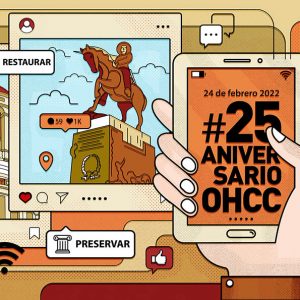For the Mambises, Homeland always came first, today we are talking about Don Agustín de Miranda and Piloña, colonel of the Liberation Army, who during his 80 years, besides fighting for social justice, treasured “several Holy Relics of the Fatherland” .
Among them is his admiration for Joaquín de Agüero and his companions: Fernando de Zayas, Miguel Benavides and Tomás Betancourt, all executed by the Spanish regime on August 12, 1851 in the old Sabana de Méndez, accused of defending their national values.
Agustín’s respect for the Camagüey patriot goes beyond having participated in the planting of the four palms in the Agramonte Park, as a symbol of the town’s tribute.
Hours after the execution, the bodies of Joaquín de Agüero and Miguel Benavides still laid in the savanna, because their relatives, fearing of repression from the Spaniards, had not claimed them to bury them, and at dusk they would be thrown into the common grave where the unknown people end.
The Colonel, without fear of arrest, went and took charge of the mortal remains and took them to the pantheon of his family, to give them a worthy burial. The dome ciphered with the number 98, in the holy field of the Church of the Sacred Heart, now the General Cemetery of Camagüey, since then keeps their bodies.
 In a sort of historical testament, Don Agustín typed all the details of the event, for his children, where he wanted to update them and ask them to keep the tomb. According to reports in 1906 the mayor took charge of the cemetery and made an intervention in the vault to avoid the deterioration that already presented.
In a sort of historical testament, Don Agustín typed all the details of the event, for his children, where he wanted to update them and ask them to keep the tomb. According to reports in 1906 the mayor took charge of the cemetery and made an intervention in the vault to avoid the deterioration that already presented.
Many stories surrounded the discreet earthenware that keeps the remains of the Camagüey patriot, close to the centenary of Joaquín de Agüero the masons placed a bronze tablet to perpetuate his memory. Also the memories of Augustín tell that during the first 16 years after the execution, anonymously, every August 12 a paper with the following quatrain appeared on the site:
“Unfortunate victim of a sincere love
Sensed for man and for glory
Adalid Joaquín de Agüero is here
His name keeps the Cuban history
His death cries the entire Camagüey.”
168 years have passed since that unjust execution, at the time and legends, our team goes in search of confirmation, that even the remains of a patriot rest in the family vault of Los Miranda.
In the cemetery
After a long walk under the sun of the holy field, the intricate place of the vault did not facilitate the location. The staff of the cemetery office was quite indifferent to our search, but luckily we had the historian of the cemetery belonging to the Office of the Historian, who by magic of destiny heard us ask for streets and shortcuts and gladly offered to guide us.
In my coming and going for help, I spoke with a lady in the office of the Church -the Christ of the Good Journey- who confirmed that Father Cambra keeps the old books where it is registered in volume 7 with folio 166 of burials for whites, who in vault 98 (old number) lie Joaquín de Agüero and his companion Miguel Benavides.
It seemed an impossible mission but … ugh, at last we have arrived, the solemnity of the site inspires a reverence, there are no flowers, there are few gravestones and the pole for the flag that there was a long time ago is not there, but remains well sealed, ancient by over the years and in the basses the mysterious quatrain in bronze that on every anniversary was put on cardboard. The Camagüey Masons immortalized it in the metal to pay tribute to the memory of the brave patriots.
 Few people know about this sacred place. On the main street of the cemetery are the remains of Tomás Betancourt and Fernando de Zayas, but now we have the certainty where Joaquín de Agüero and his companion Miguel Benavides rest, a century and a half ago.
Few people know about this sacred place. On the main street of the cemetery are the remains of Tomás Betancourt and Fernando de Zayas, but now we have the certainty where Joaquín de Agüero and his companion Miguel Benavides rest, a century and a half ago.
Now deduct to the Archaeological Cabinet of the Office of the Historian, do the necessary research and achieve their final transfer to the Sabana Méndez, where they fell unjustly and in which they will be venerated forever. Thank you colonel de Miranda for bringing us so many well-kept treasures to our time.
Photos: Jesmir Varona Socías
Translated into English by José Carlos García Cruz






